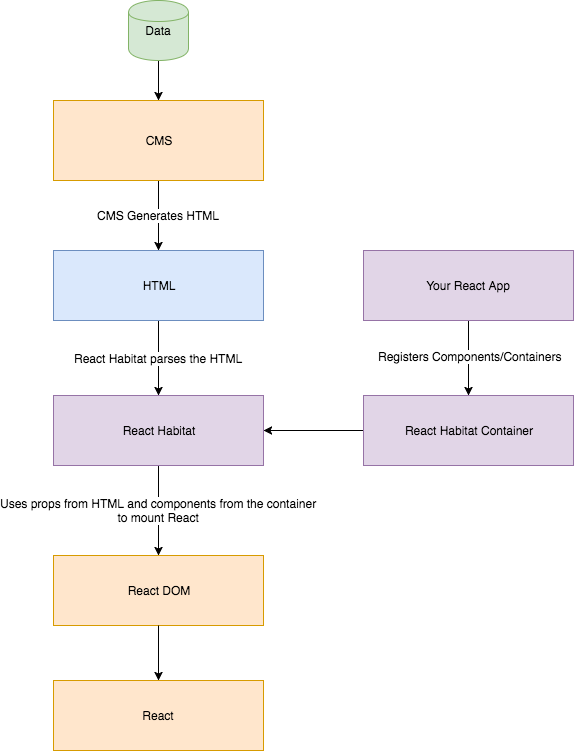Hi Ed,
Thanks for your questions, ill try to answer them and clear things up as best I can.
The problem React Habitat helps solve is a CMS will render the HTML. Given that CMS's can change create, remove and modify HTML on the fly, it can be a challenge to ensure your web app code runs predictably.
This is where React Habitat steps in. It can say every time I see "this" type of HTML from the CMS, I will put in a React Component for you (which might give the user a richer experience).
For example, your CMS might have a google map module where admins can add "maps" to a page.
You would then configure a "map" react component and define it in React Habitat to match with a HTML pattern such as <div data-component="Map"></div>. This means any time the CMS renders this HTML you can be confident your react component will initialise automatically.
Going further from this, in our example the CMS will probably also hold some sort of lat/long and zoom information that was defined inside the CMS. You can pass/retreive this information by using React Habitat data attribute props.
For example:
<div data-component="Map"
data-prop-zoom="11"
data-n-prop-lat="-37.8343"
data-n-prop-lon="144.9632">
</div>You will be able to read those properties inside your component like normal using props
So for context your CMS back end developers might implement a CMS Map module this like depending on the language the CMS is written in.
C# Razor example
<div data-component="Map"
data-prop-zoom="@MapModel.zoom"
data-n-prop-lat="@MapModel.lat"
data-n-prop-lon="@MapModel.lon">
</div>PHP example
<div data-component="Map"
data-prop-zoom="<?= $mapZoom ?>"
data-n-prop-lat="<?= $mapLat ?>"
data-n-prop-lon="<?= $mapLon ?>">
</div>What CMS are you using? If this is not clear, I'm happy to provide you examples for a specific CMS. Also check out the React Habitat example, although this example doesn't use a CMS, it does gives you an idea of how it works.

Hello, Where can I find an example of usage with a CMS ?
As I understand: you feed it with html and it will add the components. But how can I feed it exactly?
What are comparable react projects/components that do about the same thing?